30 Nutrition Myths—Busted!
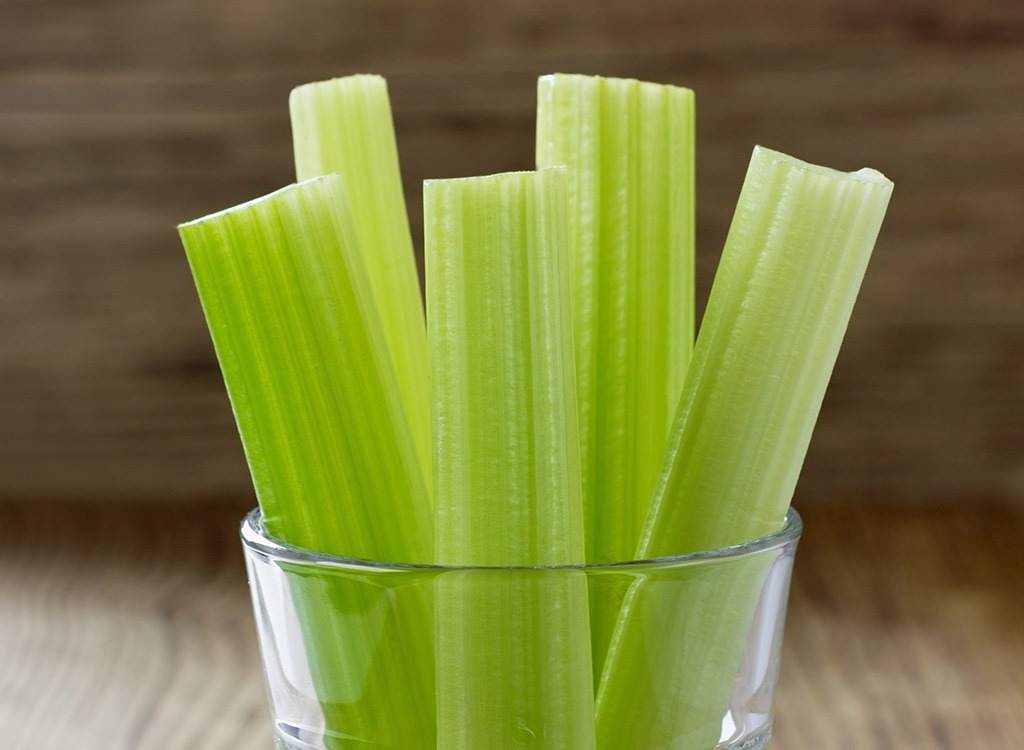
I was sorry to hear about his dilemma. What was driving him to financial ruin? What sort of nettlesome money-sapping addiction had my friend in its grasp?
“Trying to eat healthy,” he explained. “For example, every Saturday I go to the farmers’ market and shell out $24 a pound—for kale! It costs me a fortune. But if you want to eat right, you gotta shell out for the good stuff, no?”
I shook my head. At Eat This, Not That!, we spend a lot of time unmasking health imposters. And the truth is, the superpowers of kale, like the dangers of the Bermuda Triangle, have been highly exaggerated. Sure, it’s good for you, but the ranking of kale as our greatest green is just one of many word-of-mouth myths that drive our nutritional decision-making, often in the wrong direction. Much of what we believe about food is really just hearsay, a game of nutritional telephone handed down from science journals to newspapers to television to your Aunt Phoebe to your mom and then to you, with marketers in between.
Well, we had the research team at Eat This, Not That! track down the truth. Learn how to separate fact from fiction and you might finally shed the habits that are silently sabotaging your efforts. But I must warn you: The truth can hurt. Once you’ve recovered, don’t miss these 50 Best Weight Loss Tips!
A Protein Shake is the Best Post-workout Drink

Not always. Instead, try green tea! Research in Kelly Choi’s The 7-Day Flat-Belly Tea Cleanse reports that Brazilian scientists found that participants who consumed three cups of the beverage every day for a week had fewer markers of the cell damage caused by resistance to exercise. That means that green tea can also help you recover faster after an intense workout. In another study—this one on people—participants who combined a daily habit of four to five cups of green tea each day with a 25-minute workout for 12 weeks lost an average of two more pounds than the non-tea-drinking exercisers. Melt fat quickly with our best-selling weight loss plan, The 7-Day Flat-Belly Tea Cleanse! Test panelists lost up 10 pounds in one week!
High Fructose Corn Syrup is Worse Than Table Sugar
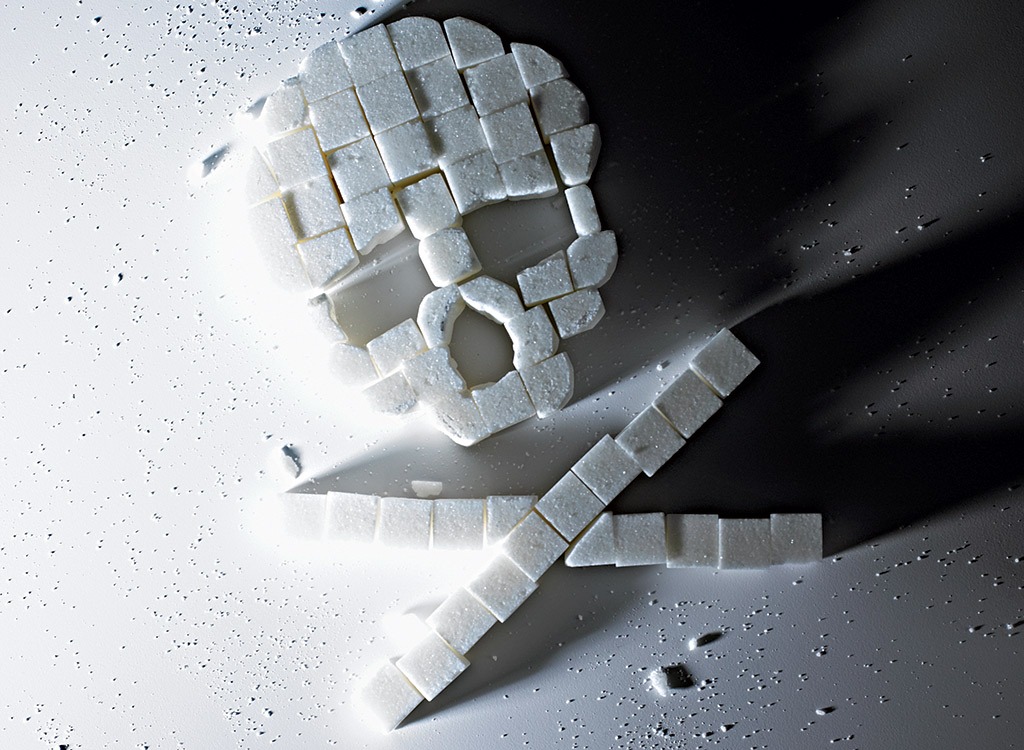
Sugar is the master of disguise. Maltodextrin, brown rice syrup, dextrose, sucrose—it’s got more alter egos than the Avengers. But it’s most well-known costume is High Fructose Corn Syrup. Whether HFCS is worse than plain ol’ table sugar has long been a contentious issue. Here’s what you need to know: In a 2014 review of five studies comparing the effects of sugar and HFCS, there was no difference found in changes in blood glucose levels, lipid levels, or appetite between table sugar consumption and HFCS consumption. In other words, your body can’t tell one from the other—they’re both just sugar. HFCS’s real sin is that it’s super cheap, and as a result, it’s added to everything from cereal to ketchup to salad dressing. Is it a good idea to minimize the HFCS in your diet? Absolutely. It’s best to cut out all unnecessary sugars. But HFCS’s role as nutritional enemy #1 has been exaggerated. Now that you know, find out how to avoid consuming so much sugar with these 30 Easy Ways to Stop Eating So Much Sugar!
Sea Salt is a Healthier Version of Regular Salt
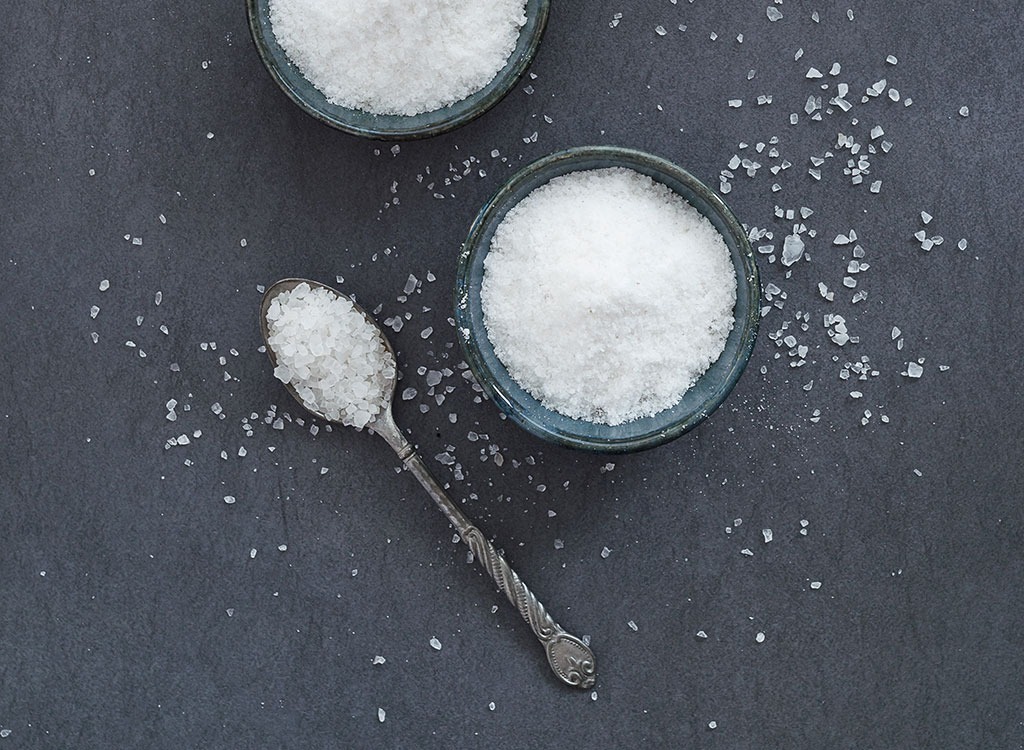
Everyday table salt comes from a mine and contains roughly 2,300 milligrams of sodium per teaspoon. Sea salt comes from evaporated seawater, and it also contains roughly 2,300 milligrams of sodium. That makes them, well, roughly identical. Advocates point to the fact that sea salt also contains other compounds like magnesium and iron, but in truth, these minerals exist in trace amounts. To obtain a meaningful dose, you’d have to take in extremely high and potentially dangerous levels of sodium. What’s more, traditional table salt is regularly fortified with iodine, which plays an important role in regulating the hormones in your body. Sea salt, on the other hand, gives you virtually zero iodine. The bottom line is this: If switching from table salt to sea salt causes you to consume even one extra granule, then you’ve just completely snuffed out whatever elusive health boon you hope to receive. Plus you’ve wasted a few bucks. P.S. — Salt is a major culprit in the 35 Things That Make You Bloat!
Energy Drinks Are Less Harmful Than Soda
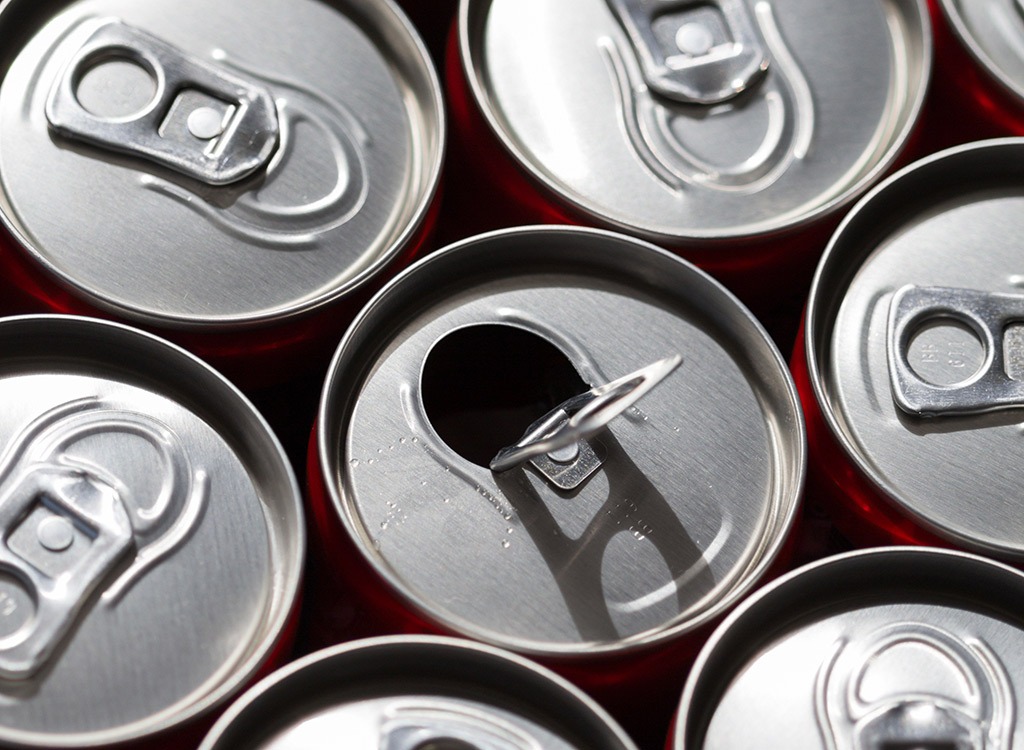
Energy drinks like Red Bull, Monster, and Full Throttle attempt to boost your energy with a cache of B vitamins, herbal extracts, and amino acids. But what your body’s going to remember most (especially around your waistline) is the sugar in these concoctions; a 16-ounce can delivers as much as 280 calories of pure sugar, which is about 80 calories more than you’d find in a 16-ounce cup of Pepsi. What’s more, a University of Maryland study found energy drinks to be 11 percent more corrosive to your teeth than regular soda. So here’s the secret that energy drink companies don’t want you to know: The only proven, significant energy boost comes from caffeine. If you want an energy boost, save yourself the sugar spike and drink a cup of coffee. (A cup of black joe: 5 calories. Make this swap once a day and lose nearly 29 pounds this year!
Diet Sodas Help Keep You Slim
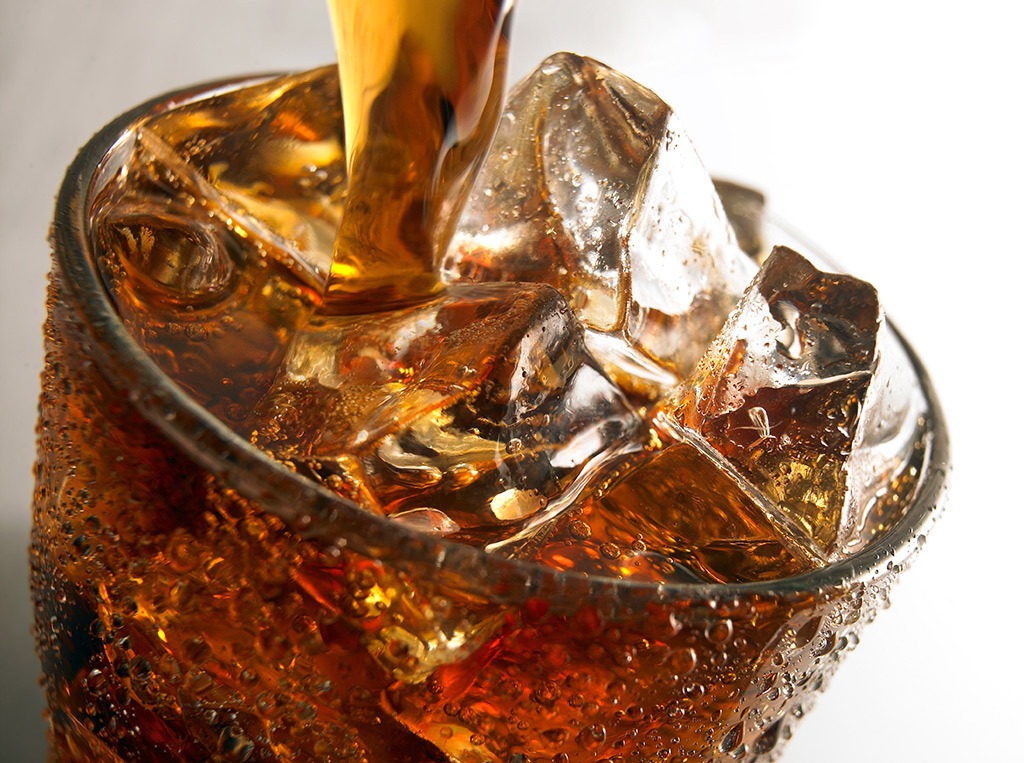
The obesity-research community is becoming increasingly aware that the artificial sweeteners used in diet soda—aspartame and sucralose, for instance—lead to hard-to-control food urges later in the day. One Purdue study discovered that rats took in more calories if they’d been fed artificial sweeteners before mealtime, and a University of Texas study found that people who consume just three diet sodas per week were more than 40 percent more likely to be obese. Try weaning yourself off by switching to carbonated water and flavoring with lemon, cucumber, and fresh herbs.
A study in the American Journal of Public Health found that more obese adults drink diet soda than healthy-weight adults and that, among the overweight and obese adults studied, those who drank diet soda ate more calories than those who consumed sweetened/regular soda. Researchers have also linked regular diet soda consumption with decreased response to artificial sweeteners and a decreased link between sweet tastes and energy value, meaning their bodies may grow to disassociate sweetness with satiety cues, making it easier to overeat and, therefore, gain weight.For more, read these essential 5 Reasons to Finally Give Up Soda.
Going Paleo is Better for You

Paleo is one of the most-Googled diets in recent years. Bacon and steak for weight loss? Yes, please! But the Paleo diet is indeed too good to be true. Although protein-rich diets help pounds fly off initially, eating a low-carb, high-protein diet can actually cause weight gain in the long-term, say Spanish researchers. In fact, their study findings revealed that those who follow high-protein diets have a 90 percent greater risk of gaining more than 10 percent of their body weight over time than those who don’t go heavy on the meat. To reap the weight-loss benefits of the Paleo diet plan–without paying for it later–nix the processed junk and oils as the diet suggests, but keep the protein in check. Men should get no more than 56 grams a day and women should aim for 46 grams. Take in more than the recommended amount and the excess will likely be stored as health-harming fat.
All Calories Are Created Equally
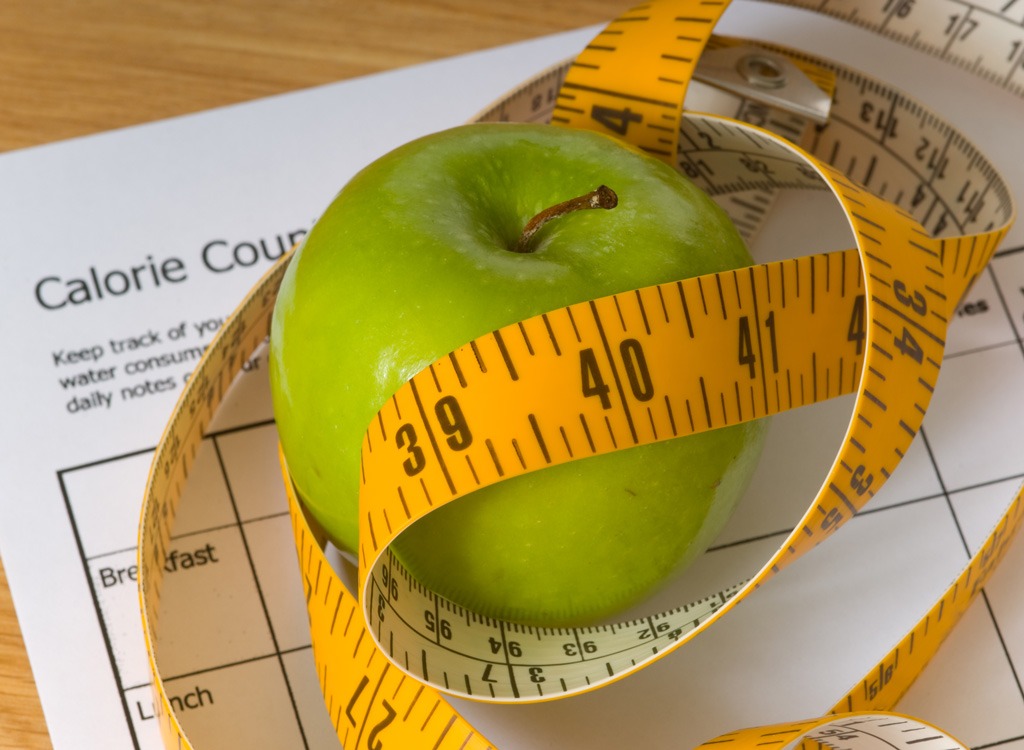
Eating 300 calories of chicken is not the same as eating 300 calories of cake. The body uses and stores calories differently depending on the nutrients each food is comprised of. Corn and beans, for example, contain something called resistant starch, a type of carb that is really hard to digest. In turn, the body isn’t able to absorb as many of the calories or as much of the glucose—a nutrient that’s stored as fat if it’s not burned off. It’s a similar story with lean-protein sources like turkey, chicken and fish. In addition to boosting satiety, protein also has a high thermogenic effect compared to fats and carbs. In turn, your body burns off a fair percentage the meat’s calories during the digesting process and post-meal calorie burn spikes by as much as 35 percent! Your favorite cookies can’t make that same claim. In fact, since the majority of sweet treats’ calories come from sugar, getting too many of your calories from desserts can leave you hungry, fat and–you guessed it–frustrated.
Foods Labeled “natural” Are Healthier
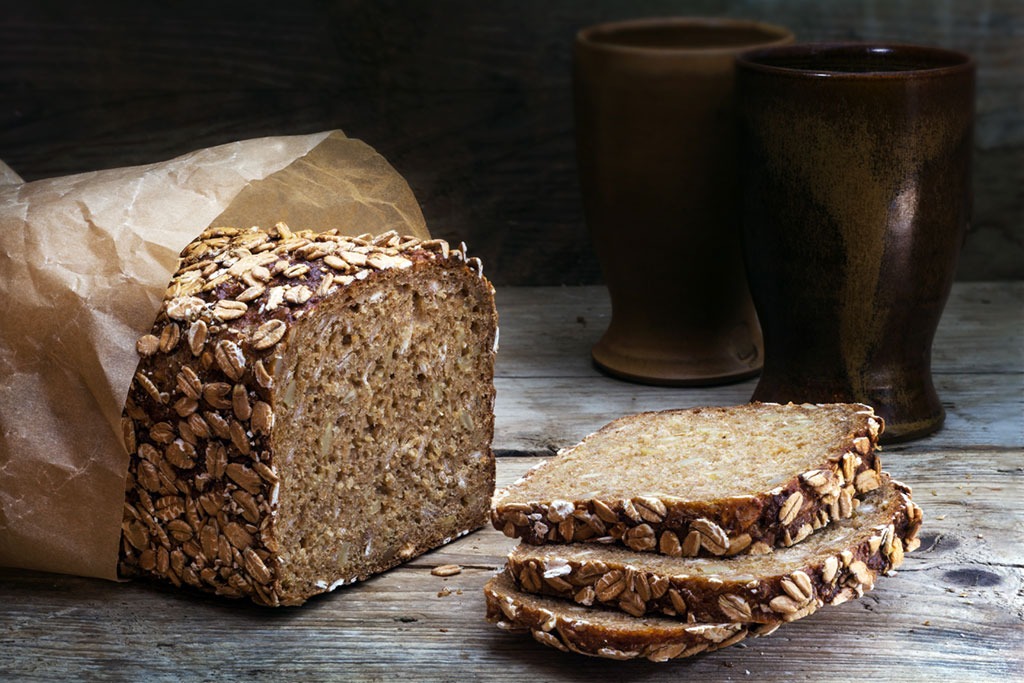
The FDA makes no serious effort to control the use of the word “natural” on nutrition labels. Case in point: 7UP boasts that it’s made with “100% Natural Flavors” when, in fact, the soda is sweetened with a decidedly unnatural dose of high fructose corn syrup. “Corn” is natural, but “high fructose corn syrup” is produced using a centrifuge and a series of chemical reactions. Other “natural” abusers include Natural Cheetos, which are made with maltodextrin and disodium phosphate, and “natural advantage” Post Raisin Bran, which bathes its raisins in both sugar and corn syrup. The worst part is, you’re likely paying a premium price for common junk food.
Yogurt is Good for the Bacteria in Your Belly
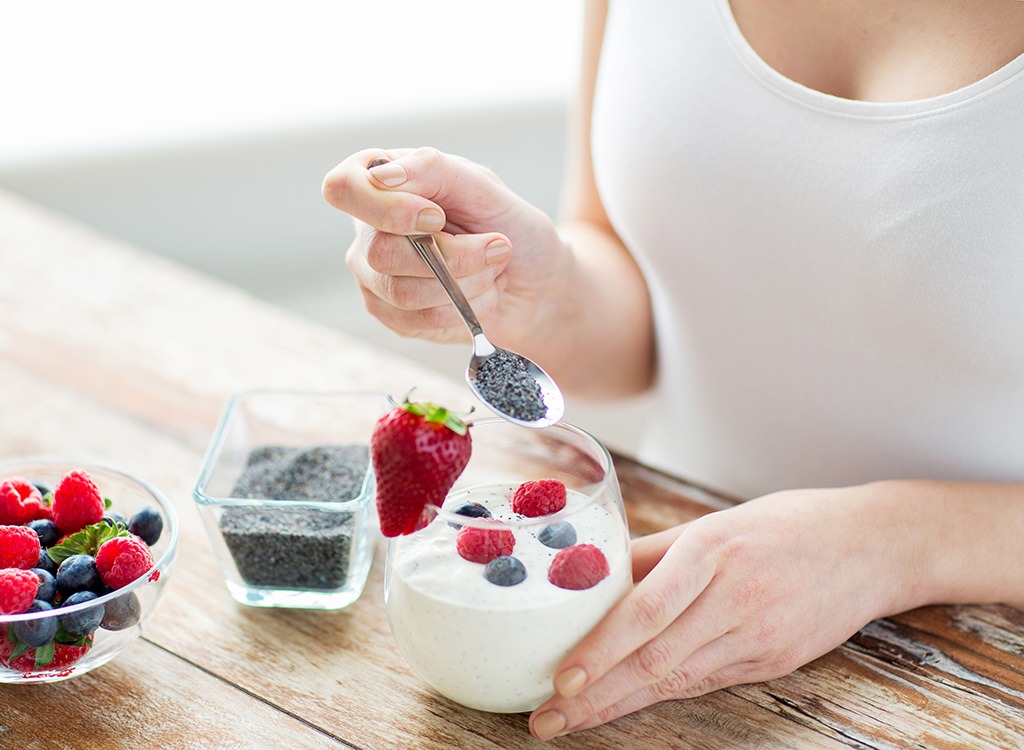
Sure, some yogurts contain beneficial bacteria that can send reinforcements to your gut when you need them. Lactobacillus acidophilus is the bacteria you want to look for, with yogurts that say “live active cultures.” But most yogurts are so high in sugar that they do more to promote unhealthy gut bacteria than anything else. (Unhealthy bacteria feed on sugar in your belly the same way they do around your teeth.) No need to read every label at the store; we did the legwork to track down the Best Brand-Name Yogurts for Weight-Loss!
Egg Yolks Raise Your Cholesterol
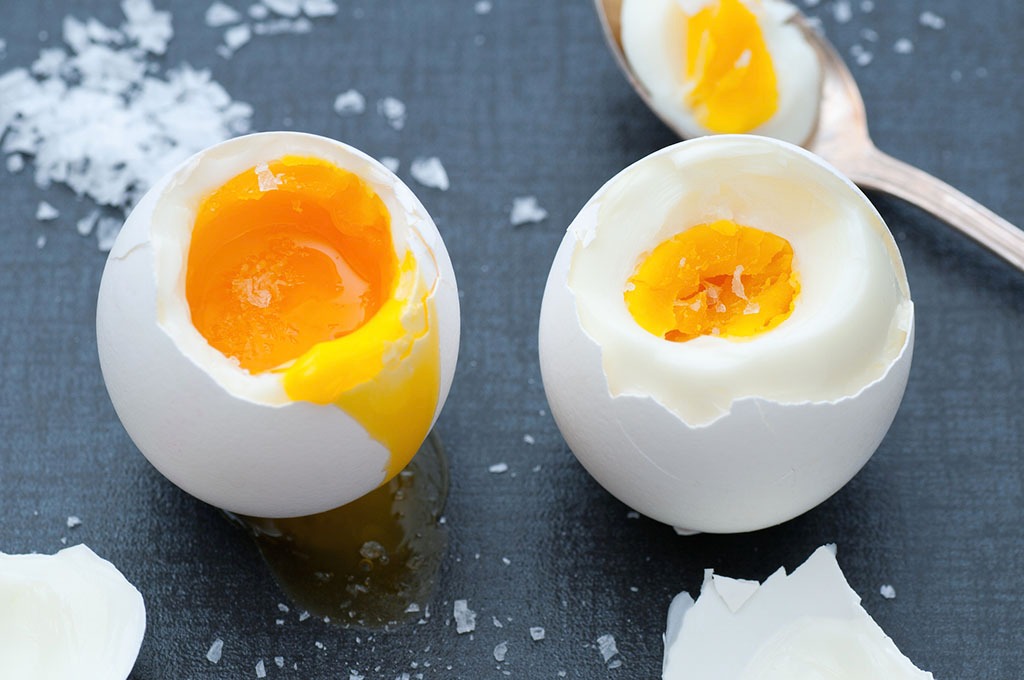
Egg yolks contain dietary cholesterol; this much is true. But research has proven that dietary cholesterol has almost nothing to do with serum cholesterol, the stuff in your blood. Wake Forest University researchers reviewed more than 30 egg studies and found no link between egg consumption and heart disease, and a study in Saint Louis found that eating eggs for breakfast could decrease your calorie intake for the remainder of the day. Bonus: Eggs are one of the 9 Foods That Shut Off Hunger Hormones—Fast!
Peanut Butter is a Health Food
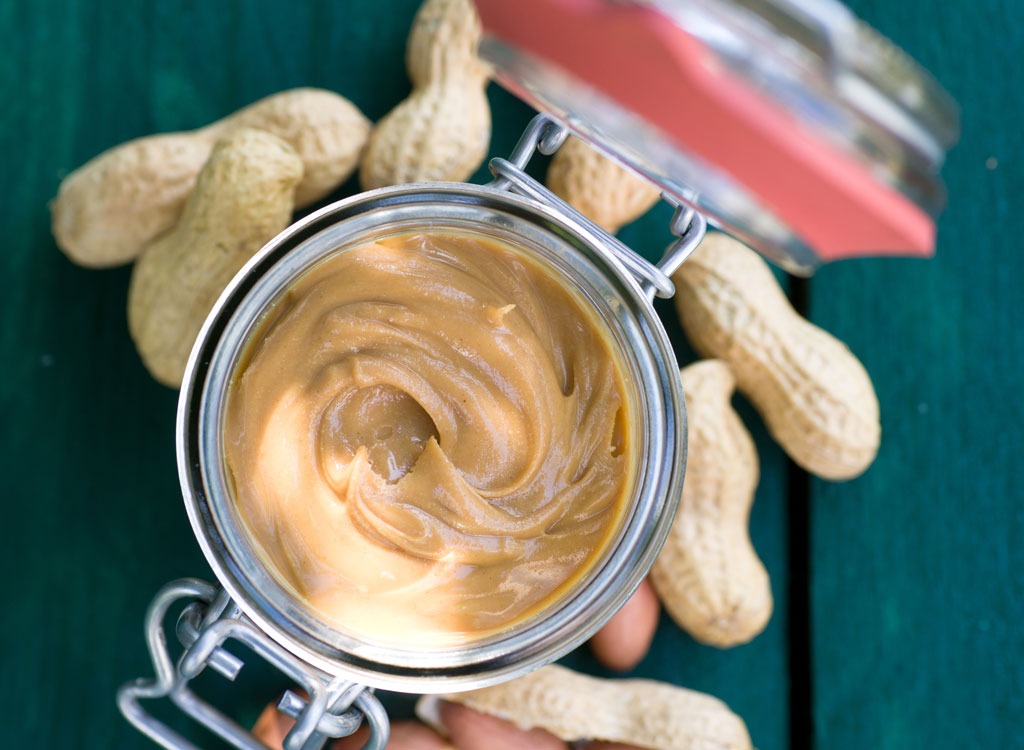
In its best form, peanut butter actually is a health food. That’s because peanuts are packed with monounsaturated fats, the heart-healthy fat that actually helps you lose weight. Here’s what the ingredients of a healthy jar of peanut butter should read:
Peanuts.
But most peanut butter doesn’t look like that. Here’s what the label of Jif Reduced Fat Creamy Peanut Butter Spread reads like:
Peanuts, corn syrup solids, sugar, pea protein, salt, fully hydrogenated vegetable oils, mono and diglycerides, molasses, magnesium oxide, niacinamide, ferric orthophosphate, zinc oxide, copper sulfate, folic acid, pyridoxine hydrochloride.
Now, I know your kids constantly beg you for seconds of pyridoxine hydrochloride, but is that something they need? Most peanut butters are highly processed and loaded with sugars and trans-fatty oils, and contain less of the healthy monounsaturated fats that you truly need. “Peanut butter spread” is even worse. The word “spread” indicates that it’s at least 10 percent additives. Look for “natural” peanut butter (Smucker’s and Justin’s both make great versions) and don’t be fooled by any low-fat promises. Read on for the 16 Best Nut Butters for Weight Loss!
Dark Chocolate is Good for You
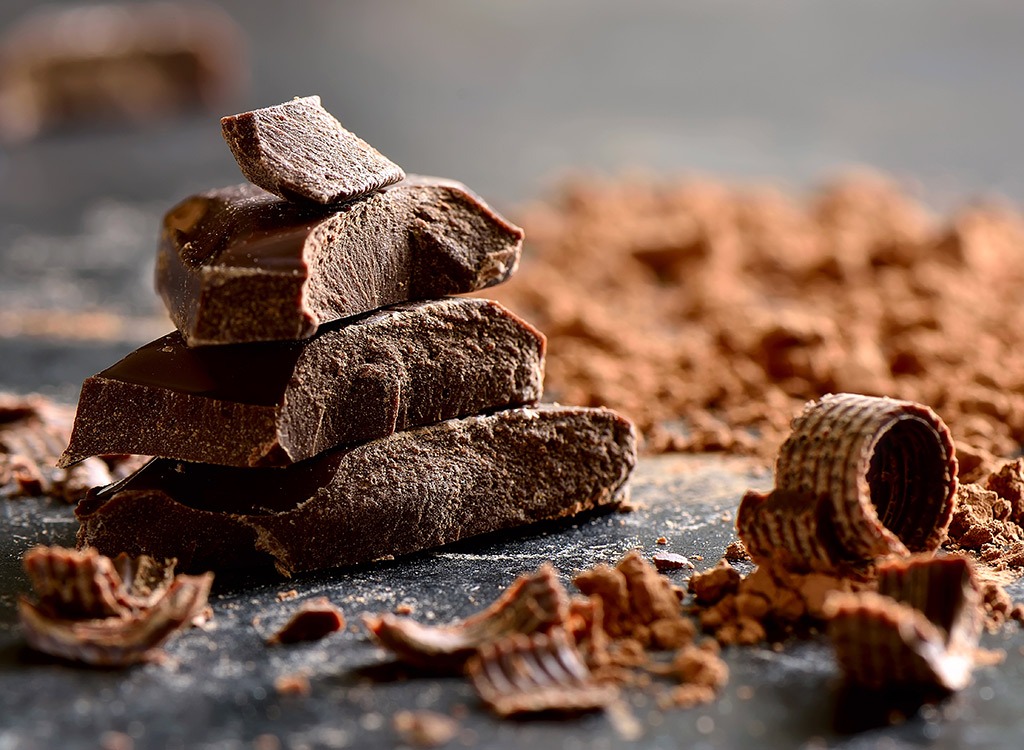
It would be great if the only thing you had to do to eat healthy was look for chocolate bars that were darker than Kristen Stewart’s mascara. Unfortunately, the secret to unlocking the health benefits of chocolate are a bit more complicated than that. Plenty of studies have shown that polyphenols (nutrients found in darkly colored plant foods like chocolate) can do everything from lowering blood pressure to raising our ability to burn fat. A 2013 study in the journal Diabetic Medicine even found that eating dark chocolate lessened the effects of high blood sugar in diabetic patients. Unfortunately, the more chocolate is processed, the more of the polyphenols are lost. Creating “Dutch” chocolate, in which an alkalizing agent is added to the cocoa to reduce acidity, destroys up to 77 percent of the nutrients in the cocoa. To get the health benefits that have been touted since the time of Montezuma, look for a dark chocolate that says 70% cacao (or higher) on the label. The rest? It’s just candy.
Oatmeal is Good for You
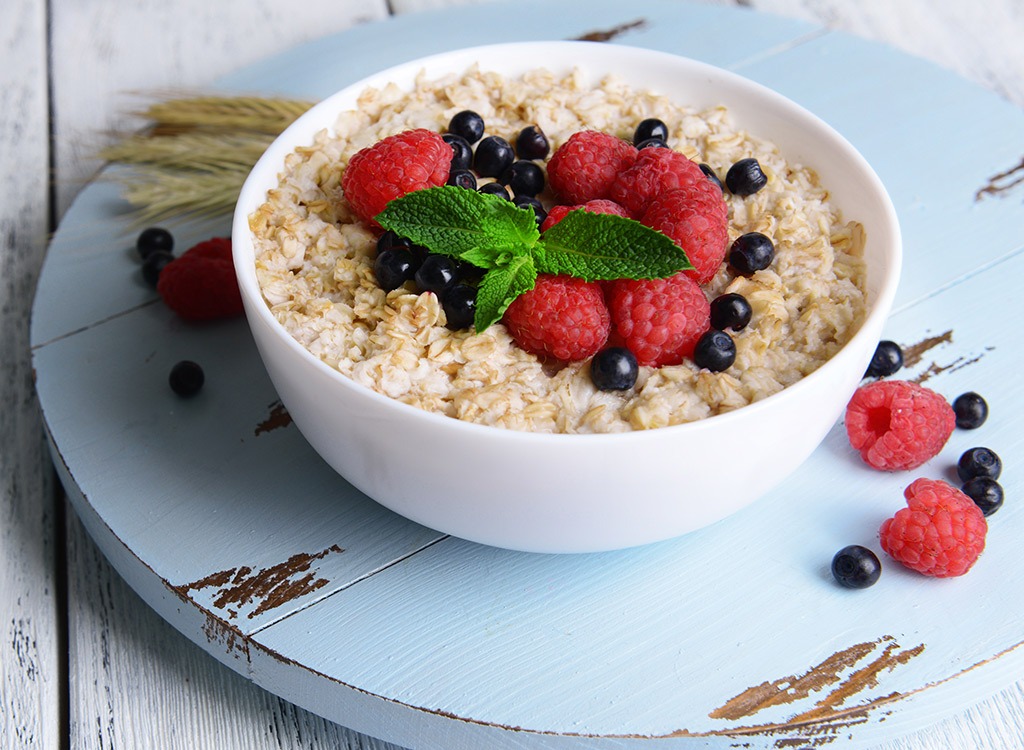
Okay, oatmeal really is good for you. If it’s just oatmeal that you made from scratch, and then sweetened yourself with a little fruit. But most of what’s sold as oatmeal today is more like a package of Kool-Ade mix. Consider Instant Quaker Oatmeal Strawberries & Cream, which features delicious sounding “flavored and colored fruit pieces.” What does that mean, exactly? What they’ve done is taken dried apples or figs and injected them with corn syrup solids, cornstarch, and trans fats, and mixed it in something called a “creaming agent.” Or check out the Fruit & Maple Oatmeal offering at McDonald’s. It’s a breakfast cereal with 32 grams of sugar–the equivalent of nearly 13 cups of Kix cereal! Click here for 50 Best Overnight Oats Recipes for Weight Loss!
Bananas Are the Best Source of Potassium
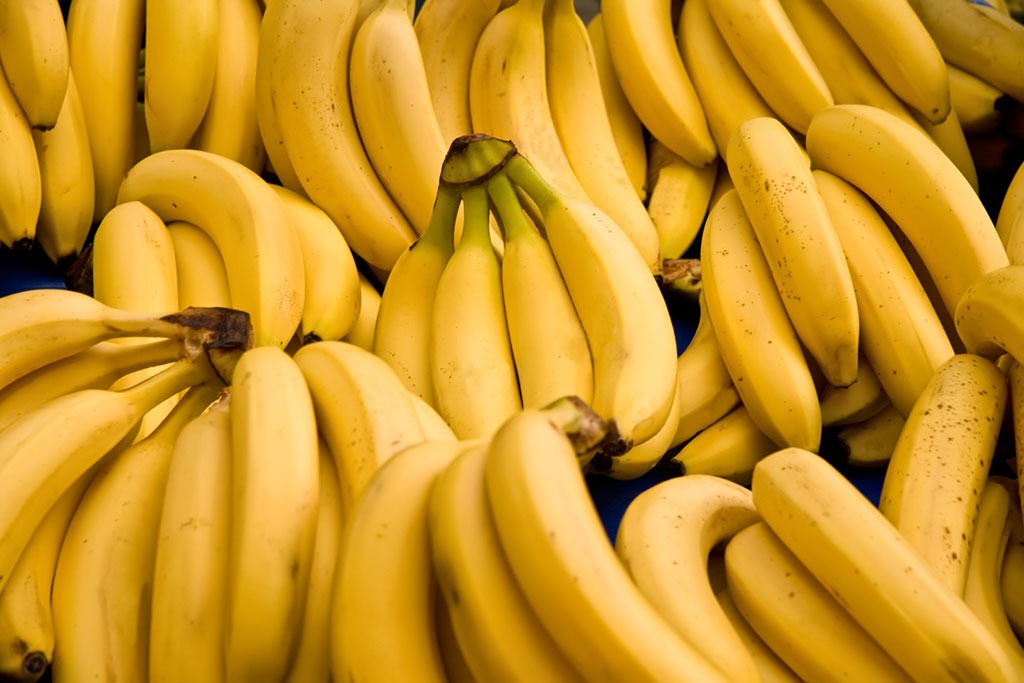
Your body uses potassium to keep your nerves and muscles firing efficiently, and an adequate intake can blunt sodium’s effect on blood pressure. One 2009 study found that a 2:1 ratio of potassium to sodium could halve your risk of heart disease, and since the average American consumes about 3,400 milligrams of sodium each day, your goal should be 6,800 milligrams of daily potassium. You’re extremely unlikely to ever reach that mark—and never with bananas alone. One medium banana has 422 milligrams and 105 calories. Although the 21 benefits of bananas are pretty amazing, here are the sources that earn you roughly the same amount of potassium in fewer calories:
— Potato, half a medium spud, 80 calories
— Apricots, 5 whole fruit, 80 calories
— Cantaloupe, 1 cup cubes, 55 calories
— Broccoli, 1 full stalk, 50 calories
— Sun-dried tomatoes, a quarter cup, 35 calories
Oranges Are the Best Source of Vitamin C
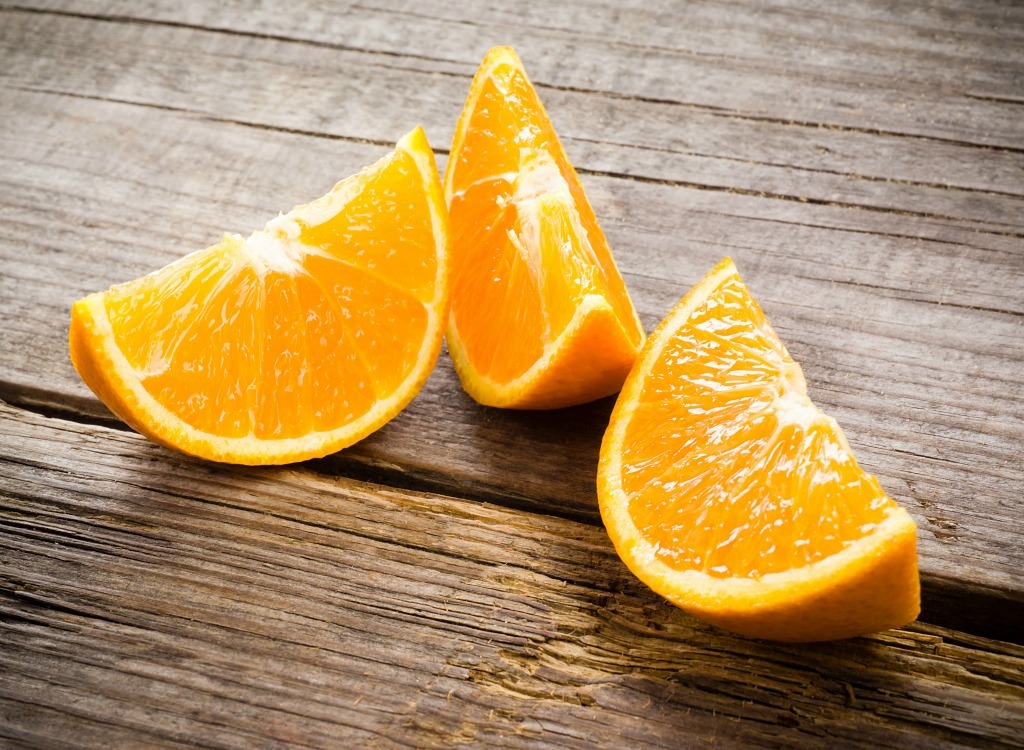
Far more than a simple immune booster, vitamin C is an antioxidant that plays a host of important roles in your body. It strengthens skin by helping to build collagen, improves mood by increasing the flow of norepinephrine, and bolsters metabolic efficiency by helping transport fat cells into the body’s energy-burning mitochondria. But since your body can neither store nor create the wonder vitamin, you need to provide a constant supply. An orange is the most famous vitamin-C food, and although it’s a good source, it’s by no means the best. For 70 calories, one orange gives you about 70 micrograms of vitamin C. Here are five sources with just as much vitamin C and even fewer calories (and click here to learn about the Vitamins You’re Not Getting Enough Of):
— Papaya, ¾ cup, 50 calories
— Brussel’s sprouts, 1 cup, 40 calories
— Strawberries, 7 large fruit, 40 calories
— Broccoli, ½ stalk, 25 calories
— Red Bell Pepper, ½ medium pepper, 20 calories
Comfort Food Chases Away the Blues
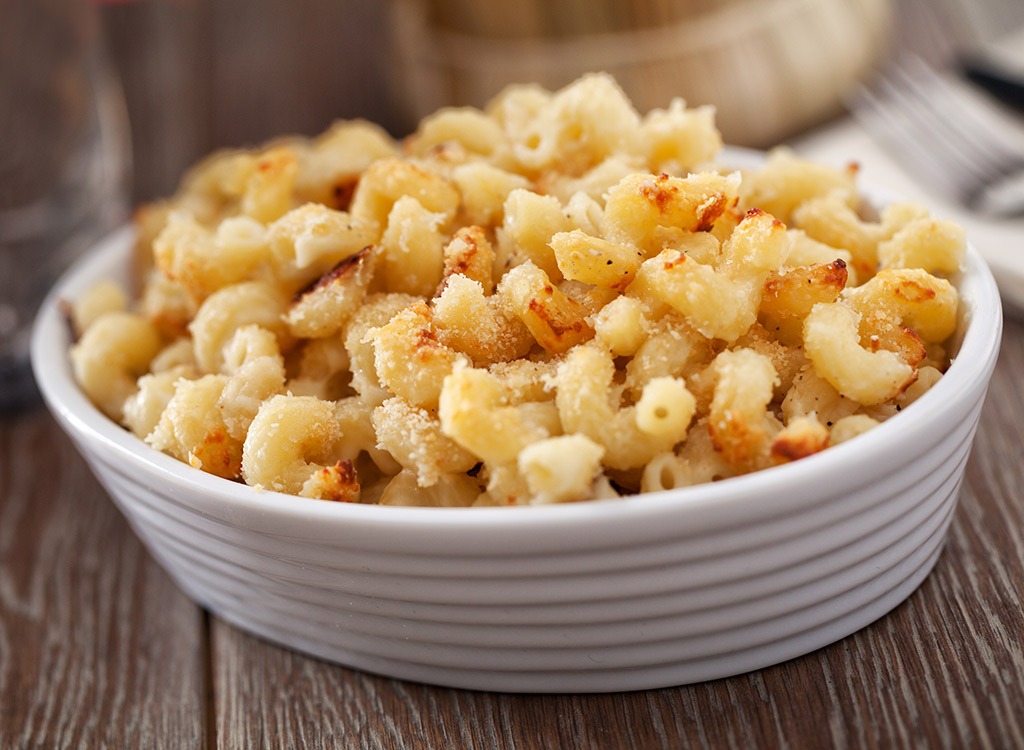
A bowl of tomato soup and a grilled cheese sandwich on a cold winter’s day. A big spoonful of mac & cheese when you’re down on your luck. Comfort food just makes you feel better, doesn’t it?
Actually, it doesn’t. In a 2014 study in the journal Health Psychology, aptly titled “The Myth of Comfort Food,” researchers showed participants depressing films to “induce a negative effect.” Then they gave them either comfort food, foods that weren’t considered comfort foods, or no food at all. Result: The subjects got over their bad moods in equal time, regardless of whether or not they ate. Is feeling bad a good excuse for eating badly? Turns out, it’s not. Cheer up—and start slimming down.
You Can Eat as Much as You Want, as Long as It’s Healthy
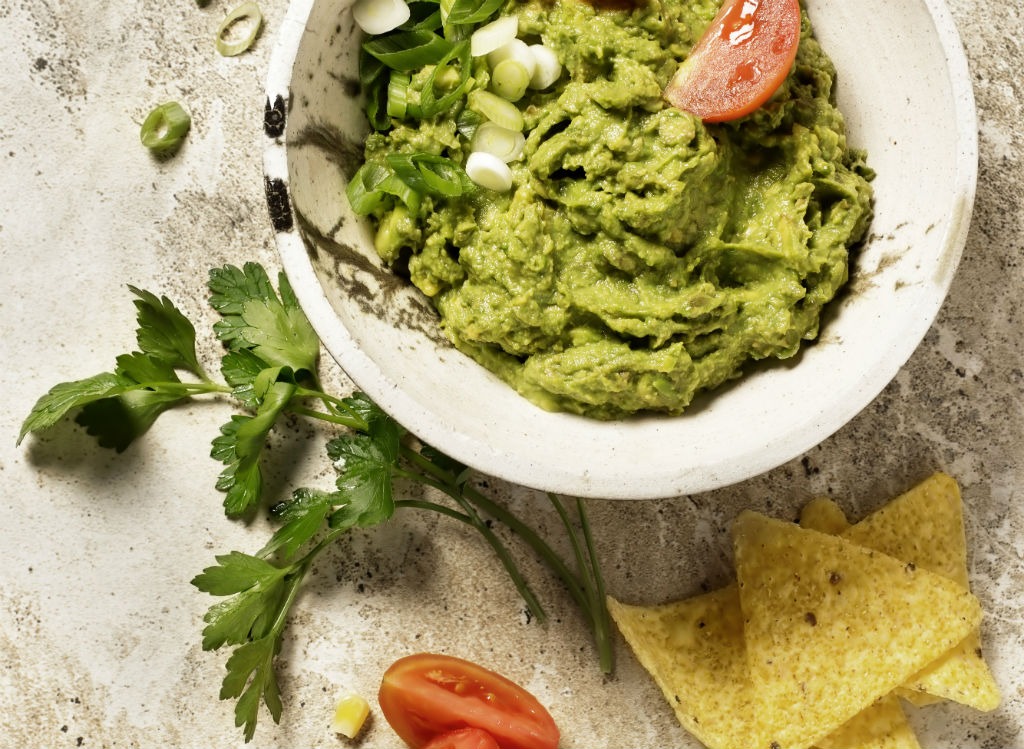
Avocados, oatmeal, nuts and their creamy, delicious butters are indeed healthy, but low in calories they are not. Sure, you’re better off eating 200 calories of oatmeal then 200 calories of sugar-spiked cookies made with the grain, but that doesn’t give you free rein to eat as much of the stuff as you want. The bottom line: Nutritious or not, portion size counts with every food. If you find that you have trouble sticking to reasonable portion sizes for some of the more caloric healthy foods in your diet, look for portion-controlled packages. Emerald makes 100-calorie almond and walnut packs, Wholly Guacamole sells 100-cal guac, numerous brands sell small oatmeal packages and Justin’s has a line of individually-portioned nut butters. Buying mini sizes in lieu of bigger tubs of food helps keep calories in check and teach you what a proper serving looks like.
Multi-grain and Wheat Breads Are Better Than White Bread
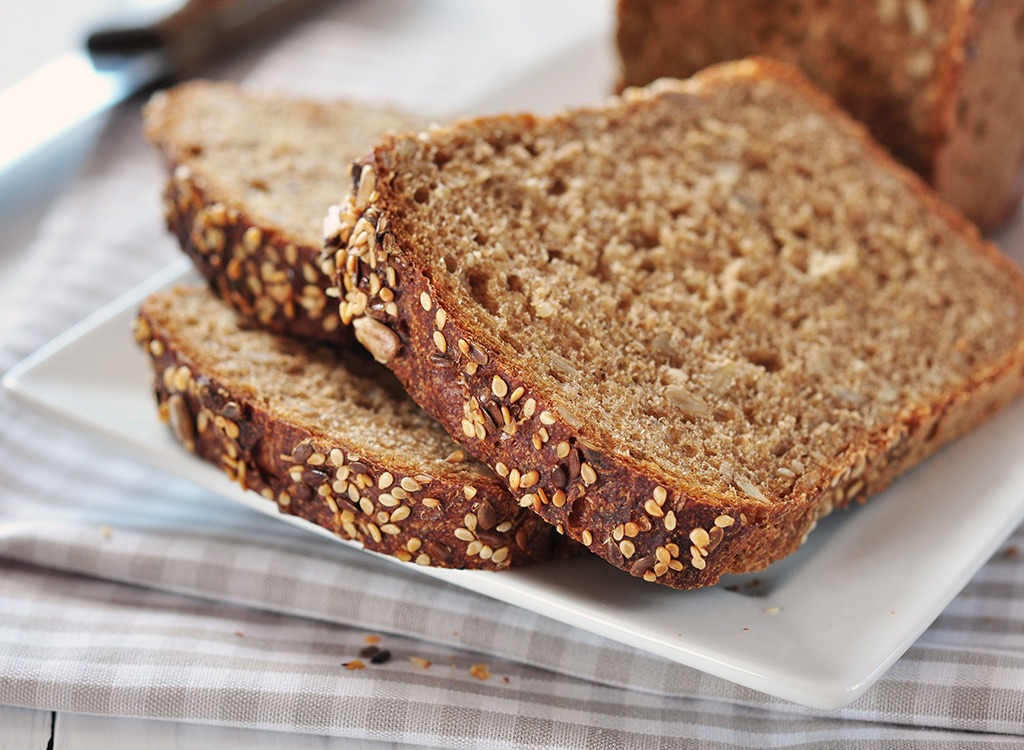
Wait a minute—isn’t “multi-grain” one of the biggest buzzwords in nutrition? And haven’t we been trained to pick the wheat bread over the white at every turn? Yes, but, unfortunately, those labels are about as credible as your local congressman’s campaign promises. “Wheat bread” is generally white bread with caramel or molasses added to make it look dark and healthy. “Multi-grain” just means that different kinds of junky refined grains may have been used. Always look for the words “100% whole wheat” or “100% whole grain” on the package—or choose one of these 10 Best Brand-Name Breads for Weight Loss!
Wraps Are Healthier Than Regular Sandwiches
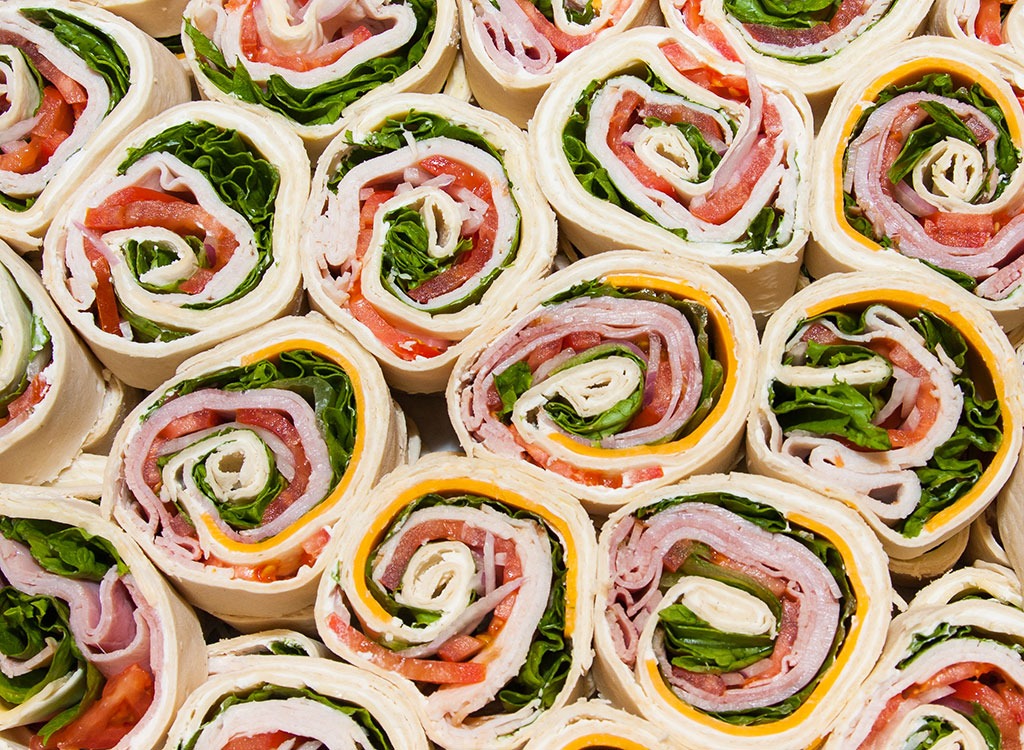
Those skinny little wraps are so flimsy, so delicate, so fusion-cuisine friendly. How can they not be better than the average lump of bread? Well, consider Subway’s wrap, for one. It packs 310 calories before you even add the first whiff of meat or sauce. The reason is that, in order for the tortilla to wrap around like that, it needs added fat, often in the form of soybean oil and hydrogenated oils. (In fact, when ordering Mexican food, you’re usually better off with a hard taco than a soft, for the same reason.)
Potatoes Are Empty Carbs
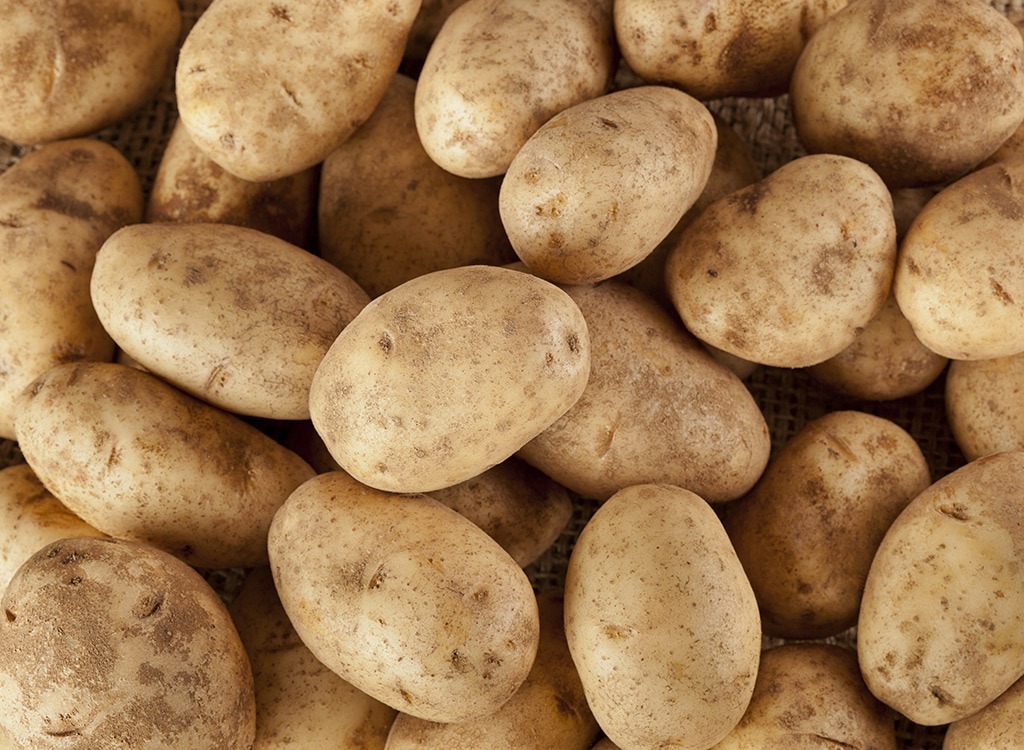
Once the proud spud stud of the American dinner plate, potatoes have been downgraded in recent years to a status not seen since the Irish blight. But unlike the commentators on cable news, the common taters in your kitchen actually have something worth chewing on. A USDA study of potatoes recently found levels of phytochemicals such as flavonoids and kukoamines that rival the amounts found in broccoli, spinach and Brussels sprouts. Kukoamines? You haven’t heard of them because they were previously believed to exist only in Chinese medicinal plants, but they have been shown to lower blood pressure by decreasing free-radical damage and inflammation. If you crave French fries, check out Elevation Burger: Their fries are just potatoes, oil, and salt, and they’re fried in olive oil. Also, don’t worry about what time you should consume carbs. A study in the journal Obesity found that nighttime carb eaters lost 27 percent more body fat—and felt 13.7 percent fuller—than those on the standard diet. Intriguing! Get an even better understanding of carbs with these 20 Worst Carb Habits of All Time.
Nutrition Bars Are Nutritious
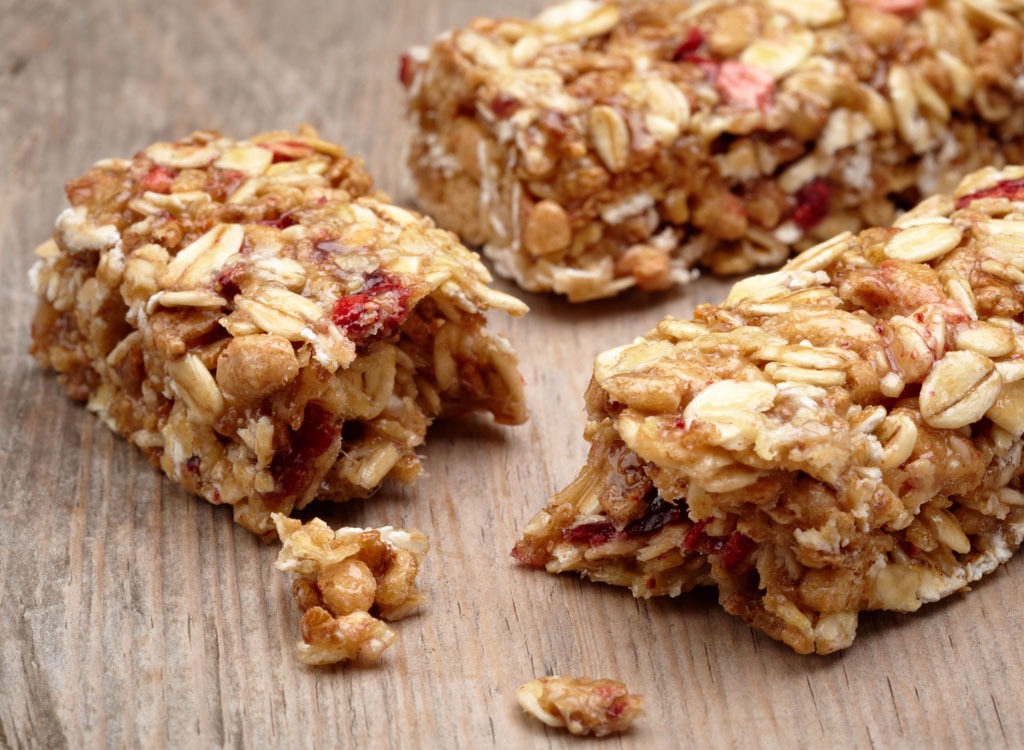
In a world where we really called it as it is, nutrition bars would be known by another name: calorie bars. Most of them are so polluted with additives that their ingredients list looks like Charlie Sheen’s blood test results. For example, PowerBar Vanilla Crisp touts itself as “fuel for optimum performance,” but unless you’re talking about a performance by The Chemical Brothers, we’re not sure exactly what they mean. With four different types of sugar, it packs more of the white stuff than an adult woman should eat in an entire day. If you like the idea of a snackable bar that packs in the nutrition, read the ingredients carefully: Brands like KIND (see Every KIND Bar—Ranked!), Larabar, and Clif have plenty of smart offerings. But most of what’s out there is just candy.
Celery Has Negative Calories
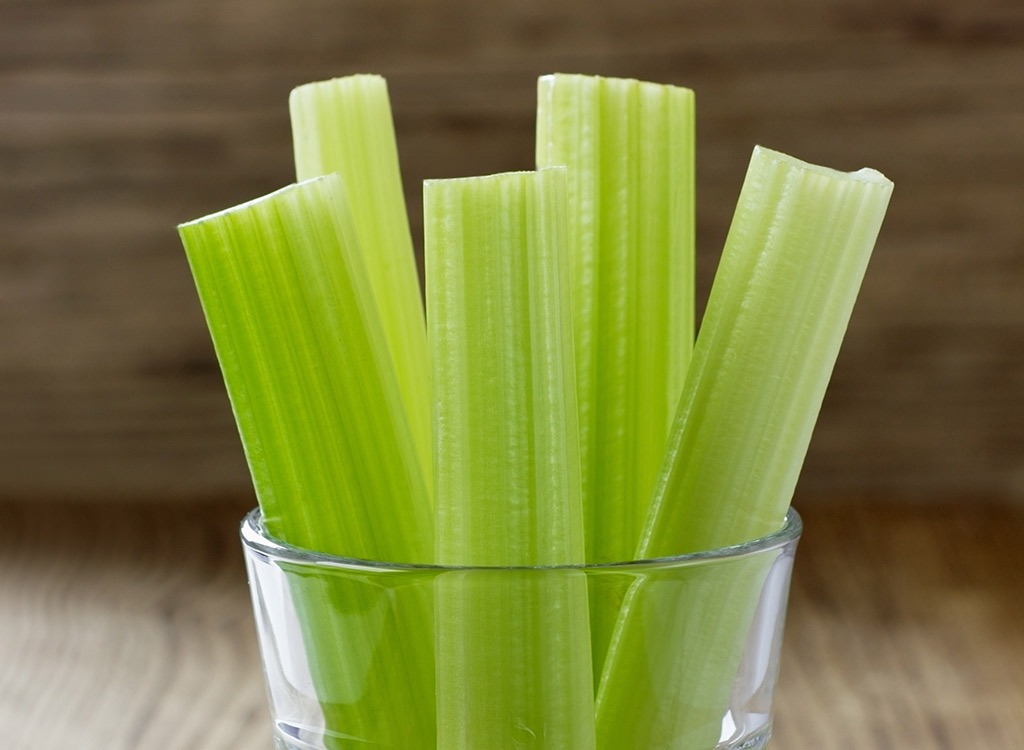
The idea of “negative calorie” foods is sexy. It’s popular. It even sounds cool. Snacking on celery? Not so! I’m actually losing weight! The theory is simple: Some foods have so few calories that the act of chewing and digesting them requires more energy than the body absorbs, resulting in a calorie deficit that leads to weight loss. Topping the “negative” list is the humble celery stick. At only 10 calories, much of the vegetable’s caloric content is bound up in cellulose, a fiber that passes through the system undigested. In reality, it only takes a little more than half a calorie to digest a stalk. Moreover, a study published in The American Journal of Clinical Nutrition suggests the thermic effect (the increase of metabolism after eating) may be even lower after high-fiber meals. Sure a celery stick is a wiser nutritional choice than say, a pretzel rod, but bottom line: if you’re eating, you’re consuming calories. And celery or any other proclaimed “negative calorie” food isn’t a magic bullet for weight loss. Instead, check out these 55 Best-Ever Ways to Boost Your Metabolism!
Nutrition Labels Are Always Factual
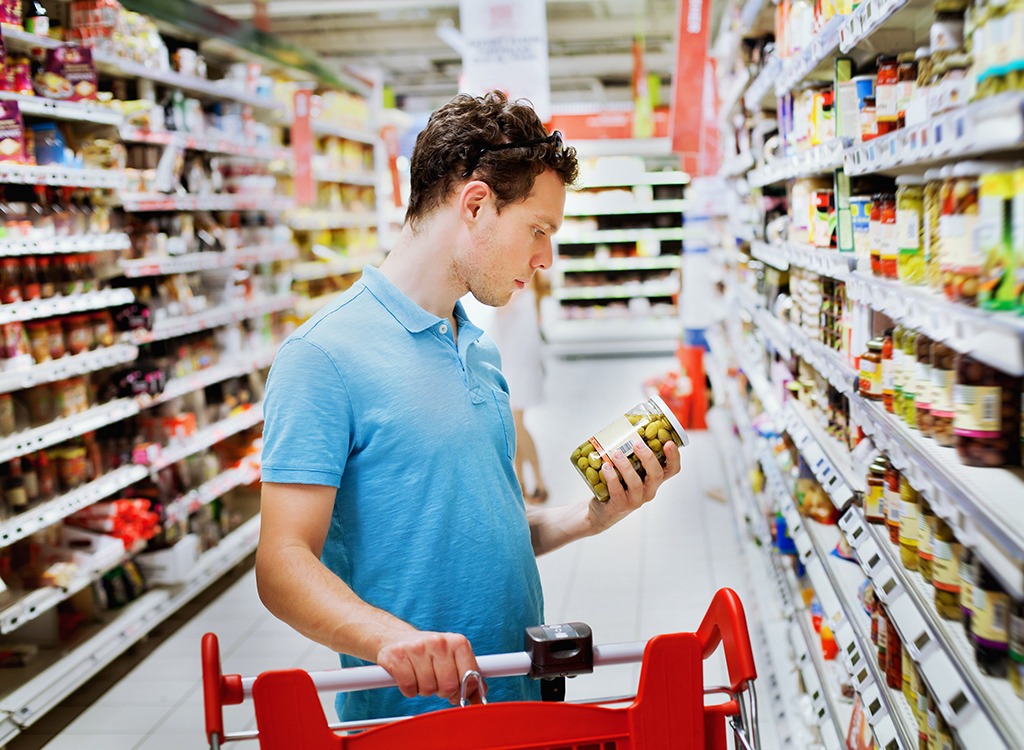
How many calories does a 100-calorie pack of mini Oreos have? The answer’s not obvious. Nutrition facts labels are mandated by the U.S. Food and Drug Administration (FDA) in accordance with the 1990 Nutrition Labeling and Education Act (NLEA). Unfortunately, they’re not always factual. In fact, the law allows a 20 percent margin of error for the stated value of calories and nutrients. In other words, your 100-calorie pack of mini Oreos could, theoretically (and legally), cost you 120 calories. One study in the journal Obesity that evaluated the “true” caloric content of 24 common food products found calories to be higher by an average of 4.3 percent. One popular snack’s carbohydrate content exceeded label statements by 7.7 percent according to the study. An investigative piece by the New York Times‘ Calorie Detective found similar, unsettling results. Of the five everyday food items from chains like Subway, Starbucks, and Chipotle that were sent a lab for testing, four had more calories than their labels reported—an excess adding up to 550 calories: enough to put on an extra pound of body weight in a week. Bottom line? Labels are a good guideline, but don’t obsess over calorie counting; if it sounds too good to be true, it probably is.
Organic Produce is More Nutritious Than Conventional
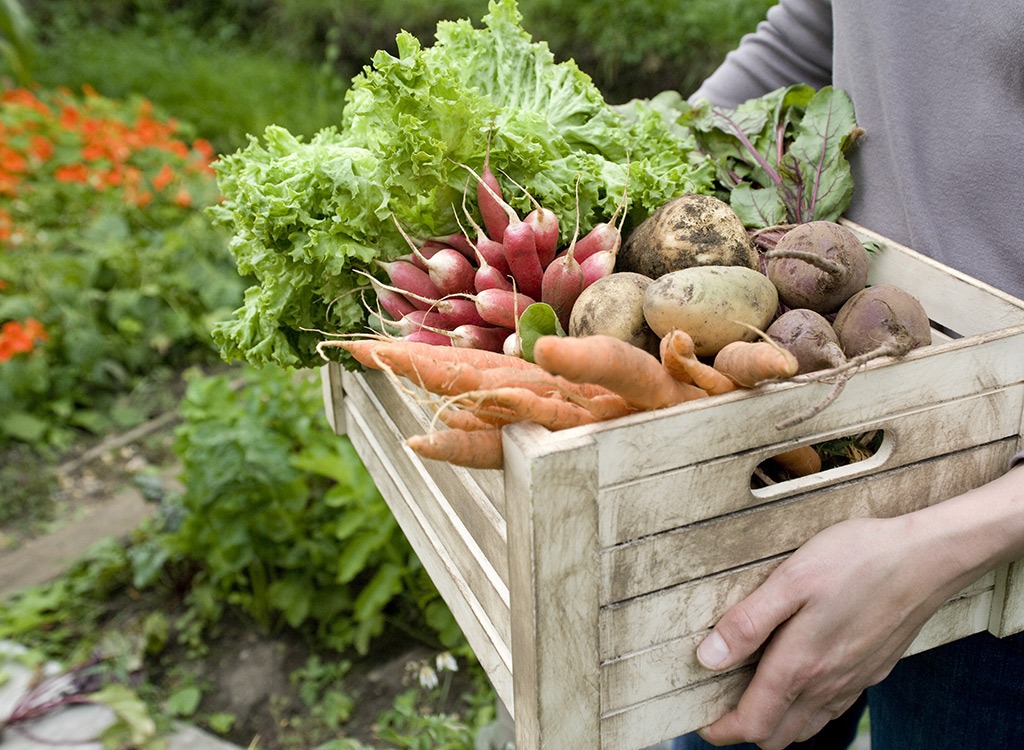
So you’re at the grocery store, and there they are: romaine hearts. They look great. And right next to them: organic romaine hearts. They look exactly the same, but they’re $1 more. Do organic fruits and vegetables actually provide a nutritional lift? Many naysayers will tell you “organic” is simply a marketing ploy and a wallet squeeze. A recent review in the British Journal of Nutrition did find substantially higher levels of antioxidants and lower levels of pesticides in organic produce compared with conventionally grown, but the study authors stop short of claiming that organic produce will lead to better health, and there are no peer-reviewed studies to support that claim. In fact, a similar well-cited analysis by Stanford scientists found very few differences in the nutritional content of organic and conventionally grown foods. The authors say the differences that do exist are so small that they’re unlikely to influence the health of the people who chose to buy (typically more expensive) organic foods. Bottom line for health experts? Buying organic fruits and vegetables may help you dodge pesticides (which can cause some tummy trouble), but there’s no convincing evidence (yet) that conventional and organic produce are different in nutritional composition.
Kale is Our Healthiest Green
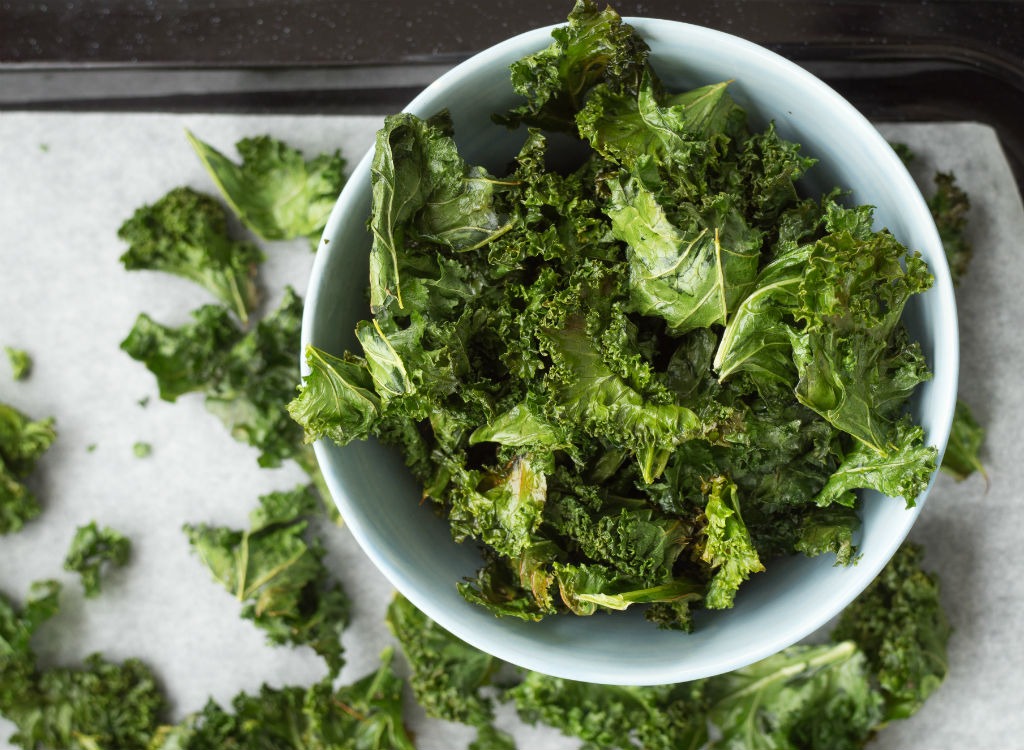
A 2014 study at William Paterson University ranked fruits and vegetables by their nutrient density, based on their levels of 17 different nutrients that have been linked to improved cardiovascular health. Not surprisingly, the top 16 were all leafy greens, which pack the most nutrition per calorie. (Coming in at #17 was red bell peppers.) But kale didn’t even make the top 10. In fact, simple spinach and even Romaine lettuce beat the alleged supergreen, as did parsley and chives. Even stuff you normally throw away–the greens atop beets–pack more nutrition. (Here’s a list of The 10 Superfoods Healthier Than Kale, so you can mix up your salad rut.)
Low-fat Foods Are Better for You
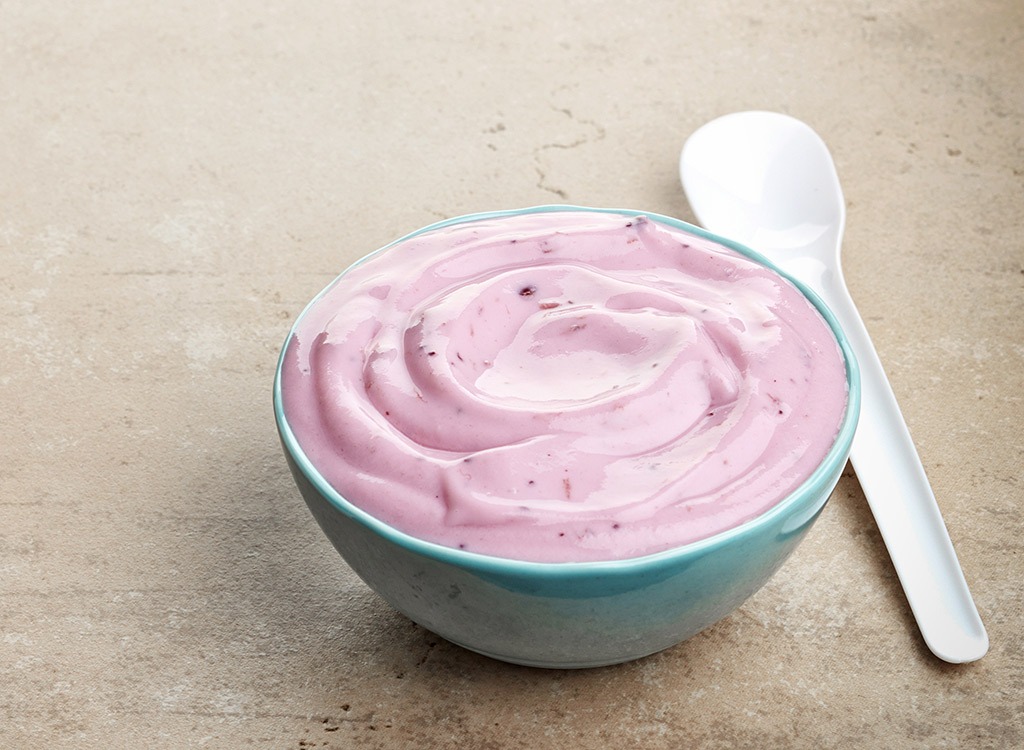
As it applies to food marketing, the term “low fat” is synonymous with “loaded with salt and cheap carbohydrates.” For instance, look at Smucker’s Reduced Fat Peanut Butter. To replace the fat it skimmed out, Smucker’s added a fast-digesting carbohydrate called maltodextrin. That’s not going to help you lose weight. A 2008 study in the New England Journal of Medicine found that over a 2-year span, people on low-carb diets lost 62 percent more body weight than those trying to cut fat. (Plus, the fat in peanut butter is heart-healthy monounsaturated fat—you’d be better off eating more of it, not less!)
To lose more weight—up to 16 pounds in 14 days!—click here to discover The Best Weight-Loss Smoothie Ever!
“Trans-fat Free” Foods Are Actually Trans-fat Free
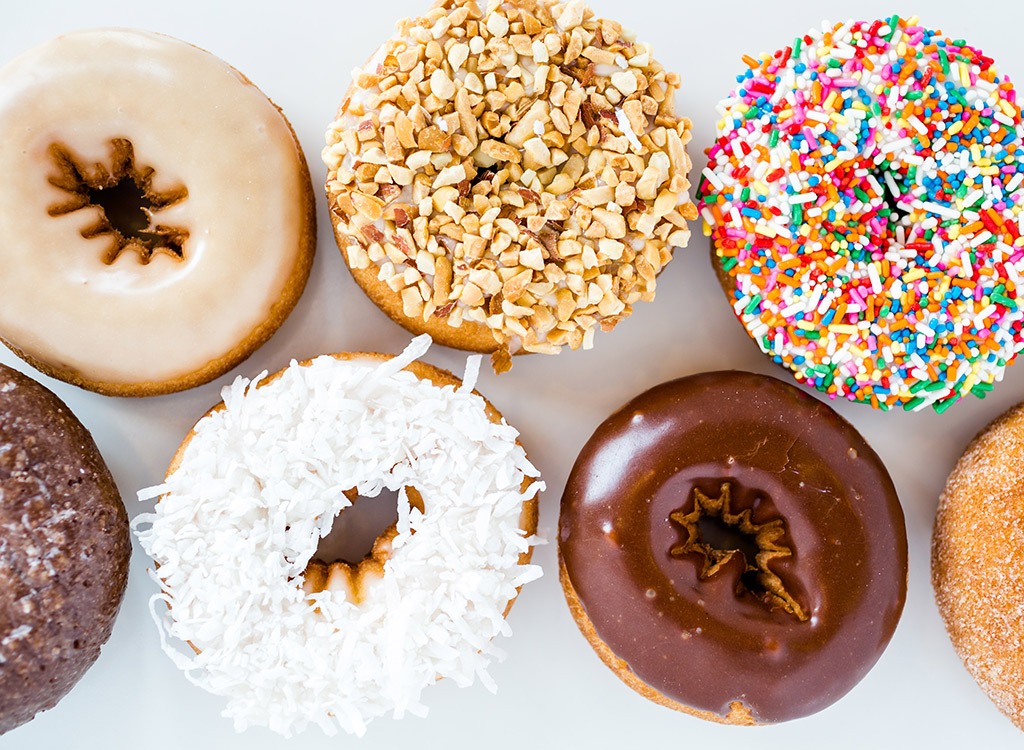
The FDA’s guidelines allow companies to claim 0 grams of trans fat—even broadcast it on the front of their packages—as long as the food in question contains no more than 0.5 grams of trans fat per serving. But here’s the deal: Due to an inextricable link to heart disease, the World Health Organization advises people to keep trans fat intake as low as possible, maxing out at about 1 gram per 2,000 calories consumed. If your cupboard’s full of foods with almost half a gram per serving, you might be blowing past that number every single day. The American Journal of Health Promotion recently published an article urging the FDA to rethink its lax regulations, but until that happens, you should avoid all foods with “partially hydrogenated oil” (meaning, trans fats) on their ingredients statements. Read more about The Ingredient That Eats Away at Your Memory!
Eating Junk Food Helps Battle Stress
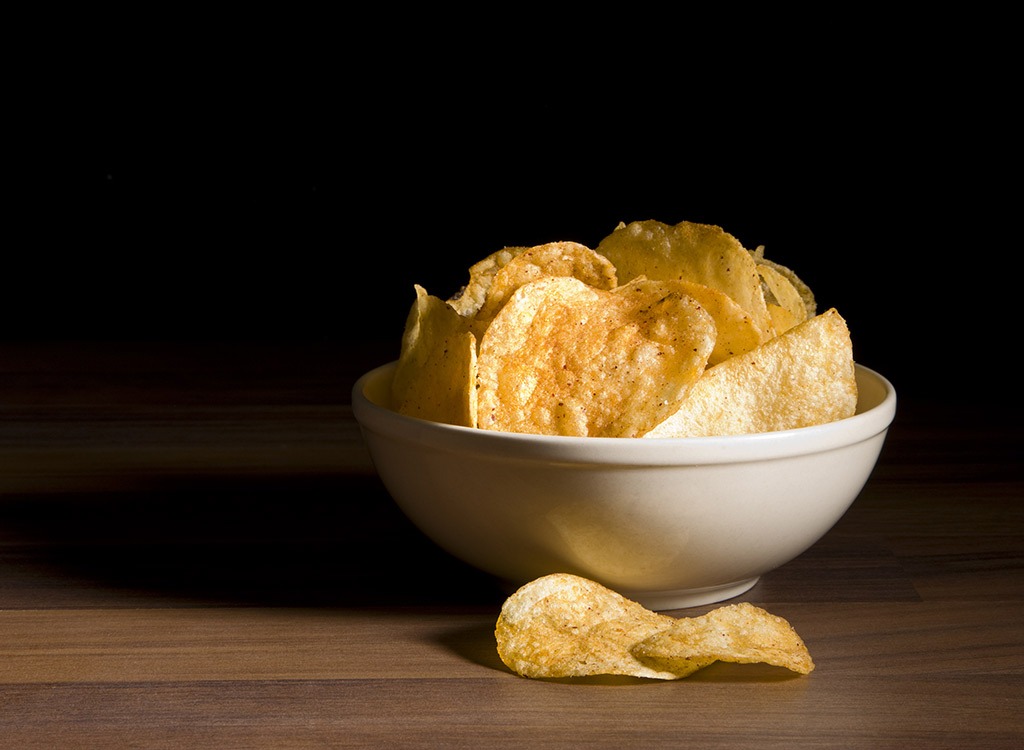
You’ve been there: Stressed out and sprawled across your sofa with one arm elbow deep in a bag of cheese puffs. In the moment, it can be comforting, but a study published in the British Journal of Psychiatry found that people who consumed the most highly processed foods were 58 percent more likely to be depressed than those who ate the least. Your move: Find a healthy stress snack. Peanut butter and Triscuits do the trick or check out the next myth.
The Caffeine in Energy Drinks Revs Up Your Metabolism
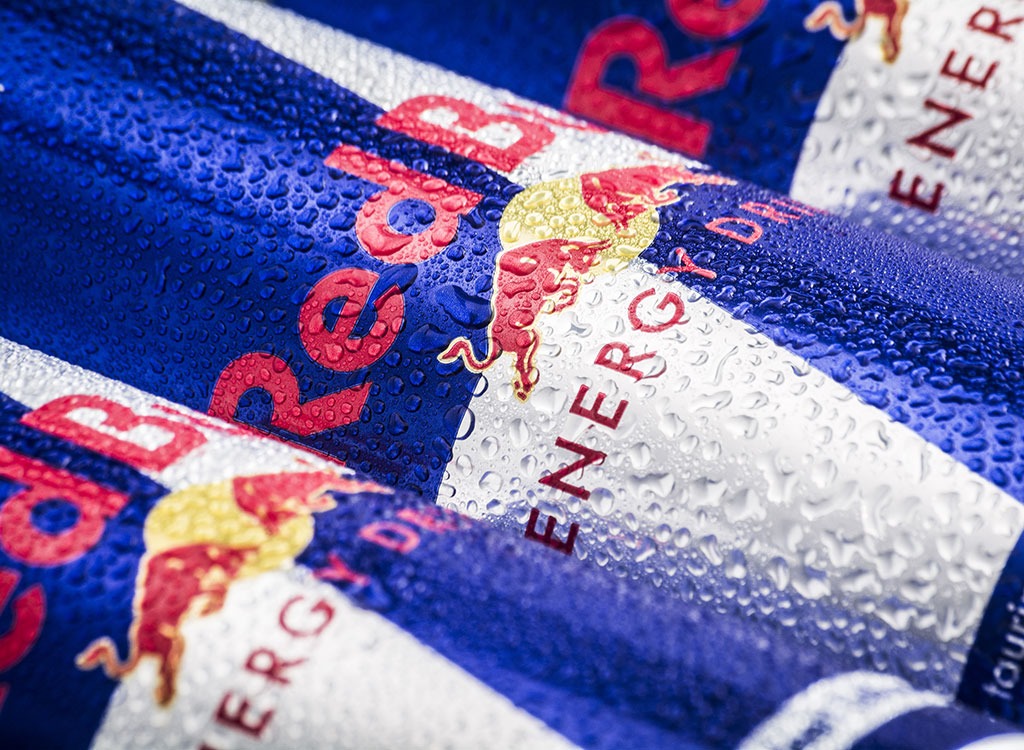
Caffeine may provide a bit of a boost to the metabolism, especially when ingested before exercise, but no amount of metabolic boost can burn off the empty calories that energy drinks supply. According to one study published in Mayo Clinic Proceedings, a typical energy drink serves up a quarter cup of sugar—calories that hit your body all at once and trigger fat storage. If you want to burn calories, try the brand-new miracle beverage known as…tap water. According to a study in The Journal of Clinical Endocrinology and Metabolism, after drinking two tall glasses of water (17 ounces), participants’ metabolic rates increased by 30 percent. Choosing the wrong drink is just one of the 25 Things You’re Doing to Slow Your Metabolism.
Tongue-scorching Peppers Burn Belly Fat
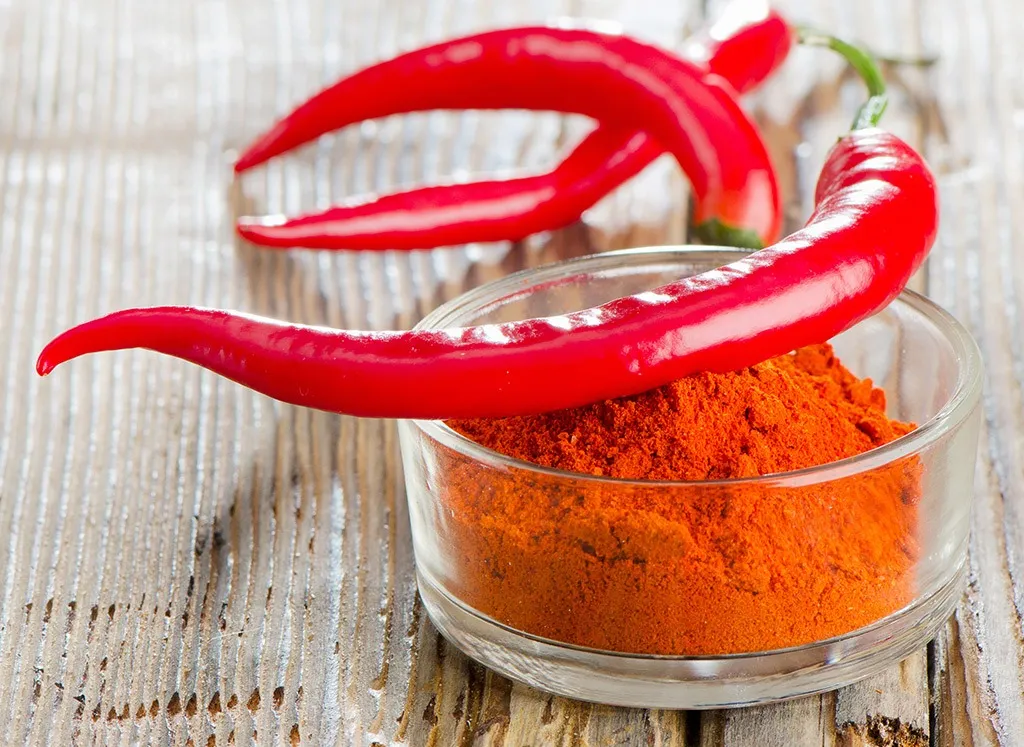
Don’t drive yourself wild—it’s okay to stay mild! Although it’s true that hot sauce can boost metabolism, there’s new research to suggest more-palatable, mild peppers may have the same calorie-burning potential—minus the tongue-burning agony! Study findings presented at the Experimental Biology meeting in Anaheim, California, suggest the compound dihydrocapsiate (DCT), capsaicin’s non-spicy cousin, is equally effective. In fact, participants who ate the most DCT from mild peppers experienced a metabolic boost that was nearly double the placebo group.








